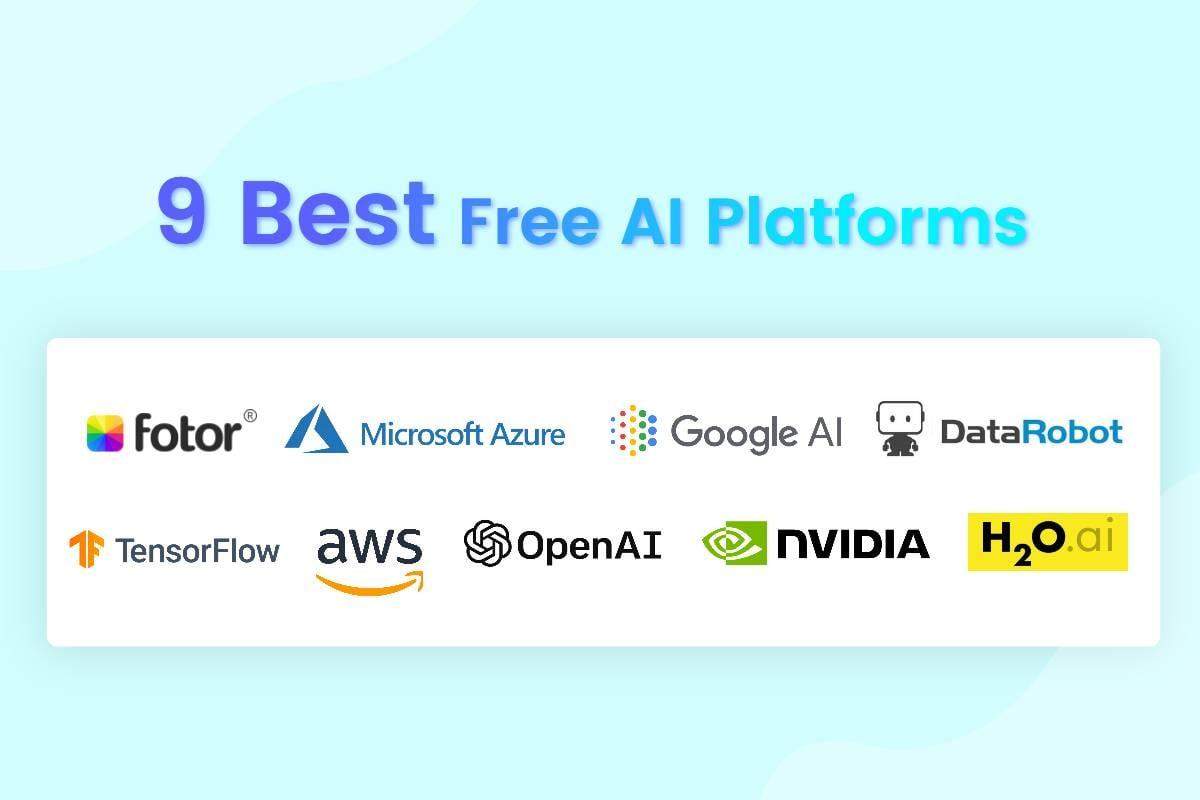Artificial intelligence is no longer a futuristic fantasy; it’s weaving itself into the fabric of our present, shaping the future in ways we’re only beginning to grasp. From revolutionizing industries to redefining creativity, AI’s impact is undeniable. This listicle spotlights four key AI platforms at the forefront of this transformation. Explore their unique capabilities, understand their potential impact, and gain insight into how these powerful tools are shaping tomorrow, today.
1) TensorFlow: Googles open-source behemoth empowers developers to build and deploy machine learning models across various domains, from image recognition to natural language processing, shaping a future where AI is accessible to all
Imagine a world where diagnosing diseases from medical images is faster and more accurate, where your phone understands your commands flawlessly, and where self-driving cars navigate our streets safely. This is the promise of TensorFlow, Google’s open-source gift to the AI community. It’s a versatile toolkit allowing developers, regardless of their experience level, to craft sophisticated machine learning models. Whether you’re a seasoned researcher pushing the boundaries of AI or a student taking your first steps, TensorFlow provides the building blocks for innovation.
From powering Google’s own products to fueling countless independent projects, TensorFlow’s influence is undeniable. It democratizes access to powerful AI capabilities, fostering a vibrant ecosystem of learning and development. Learn more about what TensorFlow offers:
- Key Features: Flexible architecture, extensive libraries, powerful tools for model visualization and debugging.
- Use Cases:
| Industry | Application |
|---|---|
| Healthcare | Early disease detection, personalized medicine |
| Automotive | Self-driving car technology, advanced driver-assistance systems |
| Finance | Fraud detection, algorithmic trading |

2) PyTorch: Facebooks dynamic computation graph framework fuels cutting-edge research and development in deep learning, enabling rapid prototyping and experimentation that pushes the boundaries of AI innovation
Imagine a digital sculptor molding clay in real-time, constantly adapting and refining the form. That’s the essence of PyTorch, Facebook’s open-source deep learning framework. Its dynamic computation graph—like a malleable digital skeleton—allows researchers to modify the structure of their neural networks on the fly. This flexibility is a game-changer, fostering rapid prototyping and accelerating the exploration of novel AI architectures. No longer constrained by static blueprints, innovators can experiment freely, pushing the boundaries of what’s possible in fields like computer vision, natural language processing, and generative AI. This dynamic nature also makes PyTorch highly intuitive and user-friendly, attracting a vibrant community of researchers and developers constantly contributing to its ever-expanding ecosystem.
From powering self-driving cars to translating languages in real-time, PyTorch’s impact is already being felt across industries. Its versatile toolkit provides everything needed for building and training complex neural networks, simplifying intricate processes with intuitive high-level APIs. Beyond research, PyTorch is also proving its mettle in production environments, offering robust tools for deployment across various platforms. This potent combination of flexibility, ease of use, and production readiness positions PyTorch as a driving force in the ongoing AI revolution.
| Key Feature | Benefit |
| Dynamic Computation Graph | Flexible model building and experimentation |
| Extensive Ecosystem | Rich collection of tools and libraries |
| Production Ready | Seamless deployment across platforms |

3) OpenAI: This research powerhouse develops powerful language models like GPT-3, democratizing access to advanced AI capabilities while grappling with ethical considerations that will define responsible AI implementation
Imagine a world where eloquent prose, intricate code, and insightful answers spring forth from a digital wellspring. OpenAI, with its groundbreaking language models like GPT-3, is making this a reality, offering access to AI capabilities previously confined to the halls of research labs. Suddenly, the power to generate human-quality text, translate languages with nuance, and even write different kinds of creative content is within reach. This democratization of AI marks a pivotal moment, unlocking vast potential across industries, from automating customer service to revolutionizing creative writing. However, this newfound power isn’t without its complexities.
As these potent AI models become more accessible, we find ourselves navigating uncharted ethical territory. Bias in training data, the potential for misuse, and ensuring responsible implementation are crucial considerations. OpenAI is actively addressing these challenges, working to refine training processes, develop safeguards against malicious use, and foster an ongoing dialogue about the societal implications of advanced AI. The future of AI is being written now, and OpenAI’s work is central to defining what responsible, ethical, and truly beneficial AI looks like.
| Benefit | Challenge |
| Democratized Access | Potential for Misuse |
| Enhanced Creativity | Data Bias Mitigation |
| Improved Productivity | Ethical Implementation |

4) Azure AI Platform: Microsofts comprehensive suite of AI services facilitates the creation and deployment of enterprise-grade AI solutions, offering a scalable and robust platform for businesses to leverage the transformative power of AI
Microsoft’s offering isn’t just about dipping your toes into the AI pool; it’s about diving headfirst into the deep end of enterprise-grade solutions. Think custom AI models tailored to your specific business needs, powerful machine learning algorithms churning through massive datasets, and seamless integration with existing Azure cloud services. It’s a comprehensive suite designed to empower businesses to build, deploy, and manage AI solutions at scale. Whether you’re looking to enhance customer experiences, optimize operations, or unlock new revenue streams, this platform provides the robust tools and infrastructure to make it happen.
But what truly sets Azure AI apart is its accessibility. Forget the complex configurations and steep learning curves. Microsoft provides a range of user-friendly tools and services that cater to diverse skillsets. From pre-trained models ready for immediate deployment to drag-and-drop visual interfaces, Azure AI empowers both seasoned data scientists and business users alike to harness the power of artificial intelligence. Need more convincing? Check out these key features:
- Cognitive Services: Infuse your applications with human-like intelligence, including vision, speech, and language understanding.
- Machine Learning: Build, train, and deploy custom machine learning models with ease.
- Bot Framework: Create intelligent chatbots to enhance customer interactions and automate tasks.
| Feature | Benefit |
|---|---|
| Scalability | Handles massive datasets and complex workloads. |
| Security | Robust security measures protect your valuable data. |
| Integration | Seamlessly integrates with existing Azure services. |
Concluding Remarks
The AI landscape is a dynamic and ever-evolving canvas. While these four platforms represent compelling brushstrokes in its current portrait, new colors and techniques are constantly emerging. The future shaped by AI promises to be a masterpiece of innovation, and we are all, in a sense, both the artists and the audience, witnessing its creation in real-time. Keep watching, keep learning, because the next groundbreaking stroke is just around the corner.




